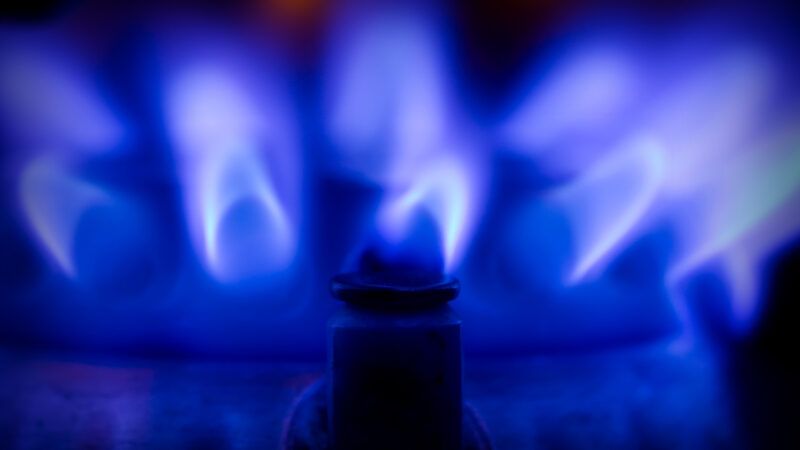Joe Biden Is Coming for Your Gas Furnace
A new proposed regulation from the Department of Energy would effectively require homeowners to shift to more expensive, more efficient condensing gas furnaces.

President Joe Biden continues his tightening of appliance regulations with new standards that will require homeowners to install more energy-efficient gas furnaces.
The new proposed rule, announced by the U.S. Department of Energy (DOE) yesterday, would require that gas-burning residential furnaces achieve 95 percent energy efficiency by 2029. The stated goal is to lower consumers' energy bills in the long run and limit harmful emissions.
"By updating energy standards for many carbon-emitting appliances, such as home furnaces, the Biden Administration is working to save consumers money," said U.S. Secretary of Energy Jennifer M. Granholm in a Monday press release. The new standards will allegedly save Americans $30 billion over 30 years.
Critics of the new rule say that consumers already have the option of purchasing more energy-efficient gas furnaces. The fact that they don't suggests it's not cost-effective for them.
"The only thing these standards do is force the ultraefficient choice on everyone, even though one size does not fit all," says Ben Lieberman, a senior fellow at the Competitive Enterprise Institute. "These efficiency standards tend to raise the upfront costs of an appliance, and you may or may not earn it back in energy savings."
The DOE press release says that homeowners would be able to meet their proposed energy efficiency standards by installing condensing gas furnaces, which reuse gas and water vapor that normal noncondensing furnaces vent into the atmosphere.
The flip side is that condensing furnaces require more parts to capture that otherwise wasted gas. They also require special ventilation systems. Both factors increase the upfront costs of these systems.
The American Gas Association, in a 2017 public comment opposing a similar rule proposed by the Obama administration, says that the purchase price of condensing furnaces is $350 higher than an average noncondensing furnace and that condensing models cost between $1,500 and $2,200 to install.
The Obama-era proposal, which would have required gas furnaces to be at least 92 percent energy efficient, was never implemented. One of the Trump administration's last moves was a January 2021 rule that required any energy efficiency standards for furnaces to keep noncondensing furnaces on the market.
The DOE's proposed 95 percent efficiency standard for gas furnaces would effectively reverse that policy.
It's the latest movement in the White House's campaign to re-regulate American appliances. Since coming into office, the Biden administration has also revived Obama-era rules restricting free-flowing showerheads and quick-washing dishwashers in the name of energy efficiency.
Former President Donald Trump's DOE had peeled back these rules, citing the damage they did to consumer choice and, in the case of showerheads, his hair.
Residential gas appliances have become increasingly controversial. Jurisdictions across the country, from New York City to Berkeley, have banned gas hookups in new construction in recent years on the reasoning that the direct consumer burning of natural gas worsens climate change.
Lieberman speculates that the Biden administration's latest proposed rules are a backdoor attempt to shift the whole country to electric furnaces. While electric furnaces are more expensive than noncondensing gas furnaces, they're cheaper than condensing gas furnaces. Faced with the choice, many homeowners would likely opt for an electric furnace over a condensing gas furnace, says Lieberman.
He also questions the climate change benefits of shifting people to electric appliances, noting that the electricity that powers them is often generated by burning natural gas anyway.
"These federal efficiency standards are a solution in search of a problem," he tells Reason.
Rent Free is a weekly newsletter from Christian Britschgi on urbanism and the fight for less regulation, more housing, more property rights, and more freedom in America's cities.


Show Comments (252)